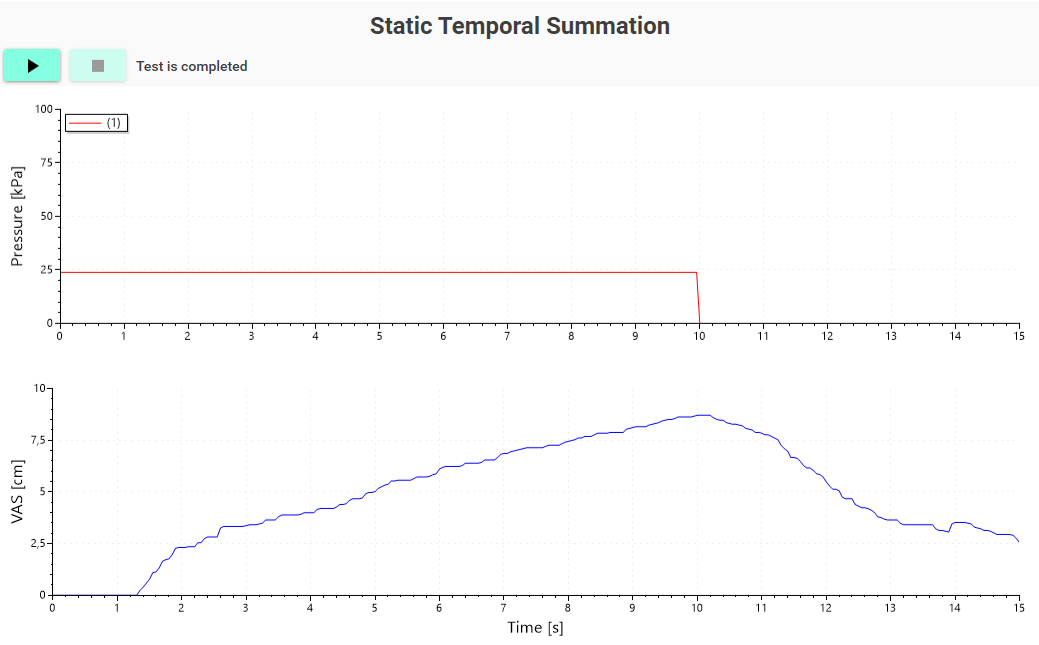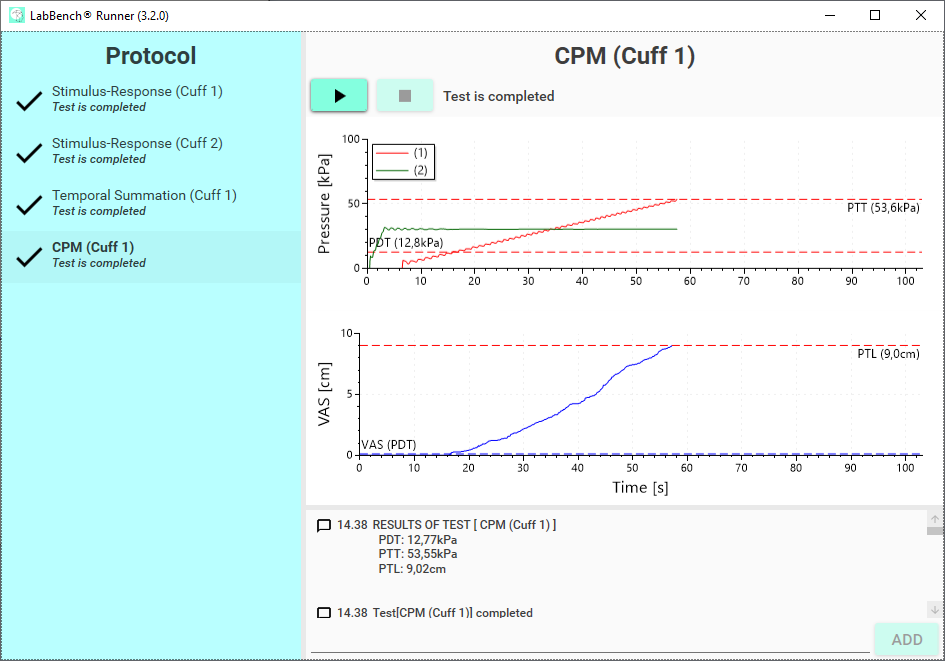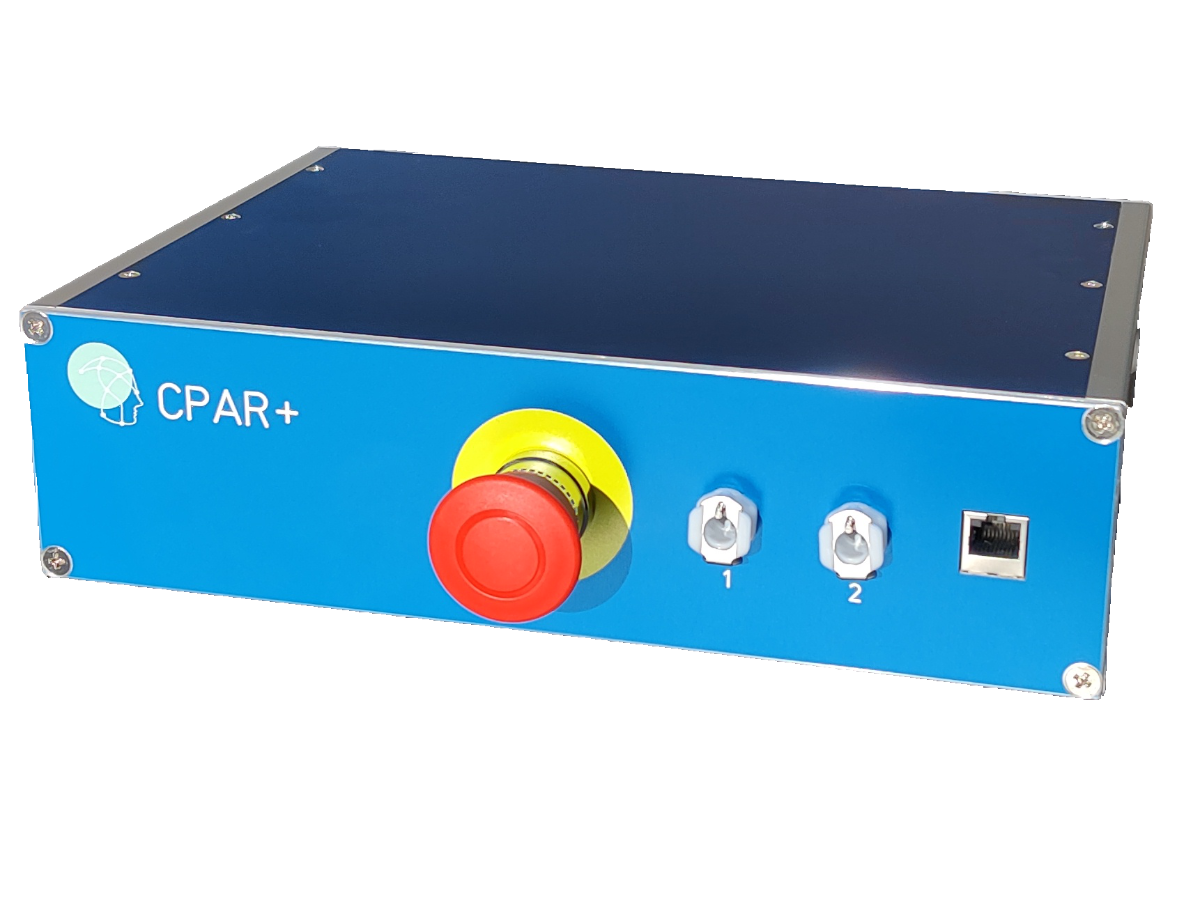Pain Detection and Tolerance Thresholds
Pain detection and Pain tolerance thresholds are determined with stimulus-response curves, a procedure in which the pressure is linearly increased. At the same time, the subject rates the pain on a rating scale or stops the stimulation with a button; the system can automatically calculate pain detection thresholds (PDT), pain tolerance threshold (PTT), and the pressure required to elicit a given VAS score from the subject.
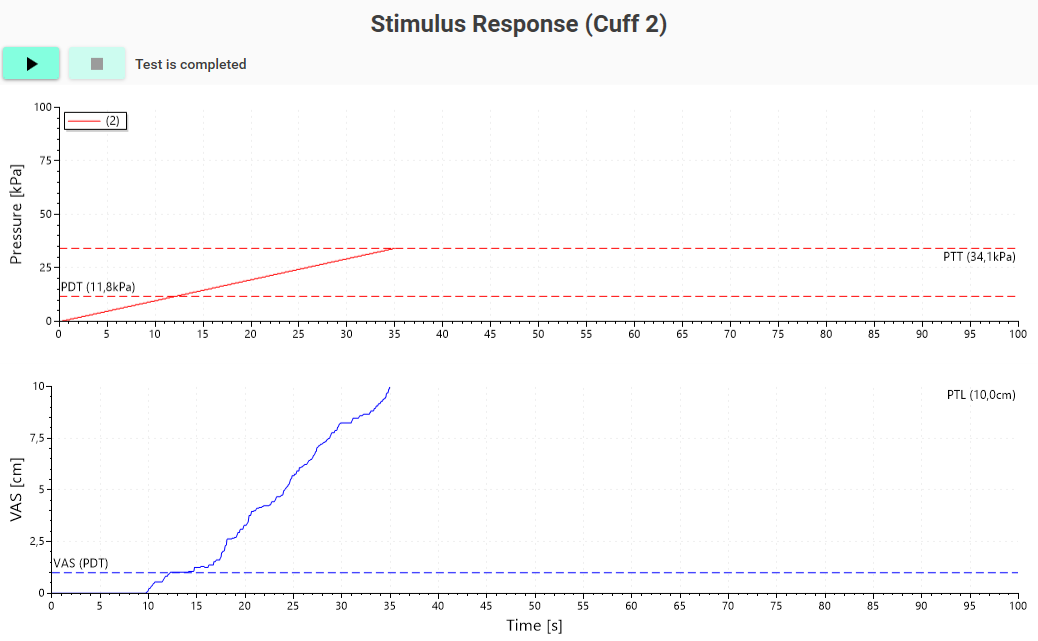
Temporal Summation
A response-dependent protocol in which pressure stimuli of the same intensity ( typically the individual PTT) are applied repetitively while the subjects rate the pain intensity. Temporal summation is then determined based on the subjects´ pain response to the stimuli. Standard and evidence-based protocols are available.
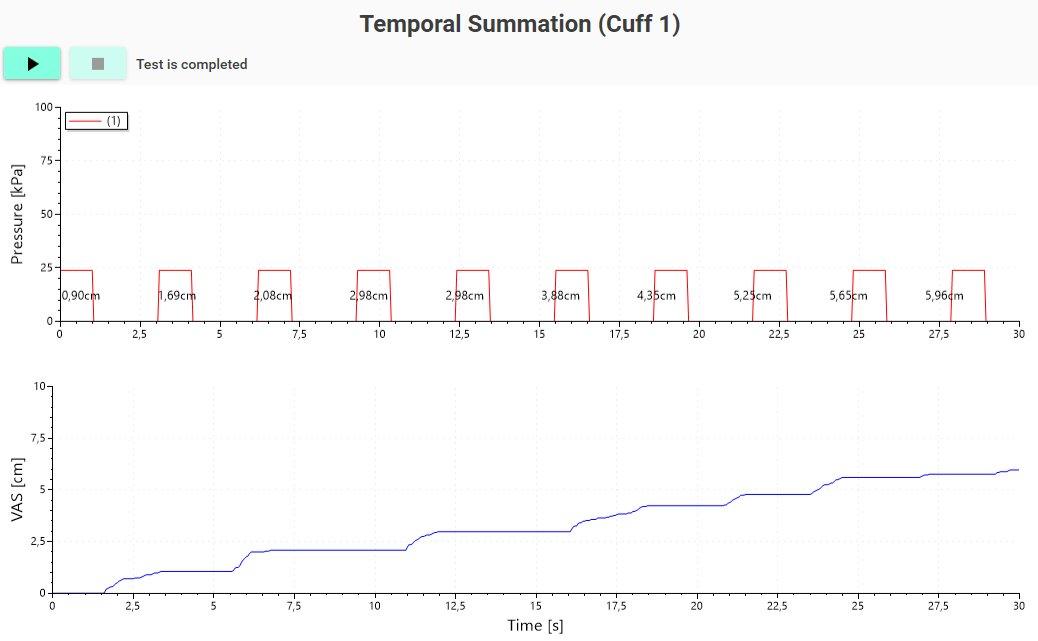
Spatial Summation
Spatial summation can be performed both with response-dependent and stimulus-dependent protocols. With spatial summation, the same protocol ( e.g. PDT/PTT) is performed repeatedly with two cuffs with a different surface stimulation area ( or two equally sized cuffs placed next to each other).
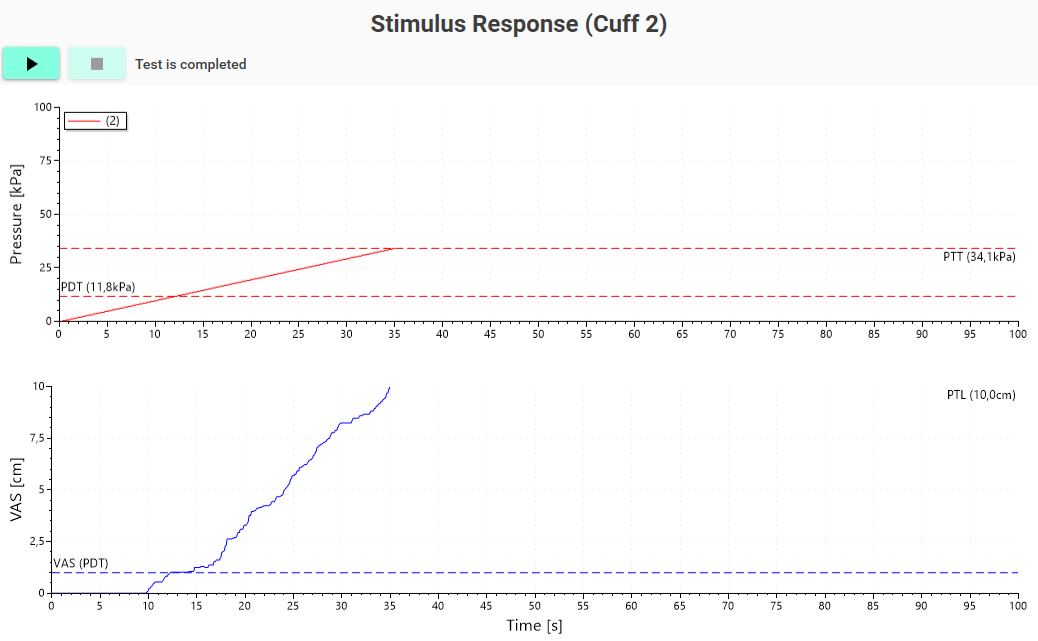
Conditioned Pain Modulation
Conditioned pain modulation is performed using two cuffs at two different extremities. One cuff is used for conditioning and inflated to a constant painful pressure stimulation, while the other cuff is used for stimulus-response assessment of the pain detection and tolerance thresholds.
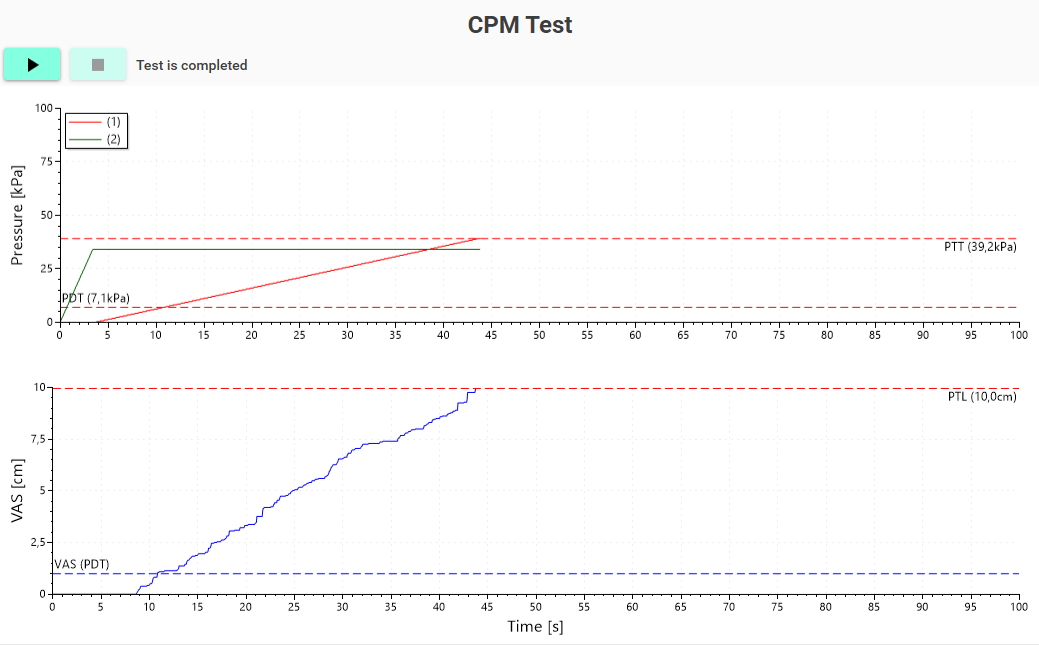
Other procedures
Arbitrary pressure stimulations can be defined by linear piecewise segments. With this capability, the experimenter can develop and use their own procedures for Cuff Pressure Algometry.
